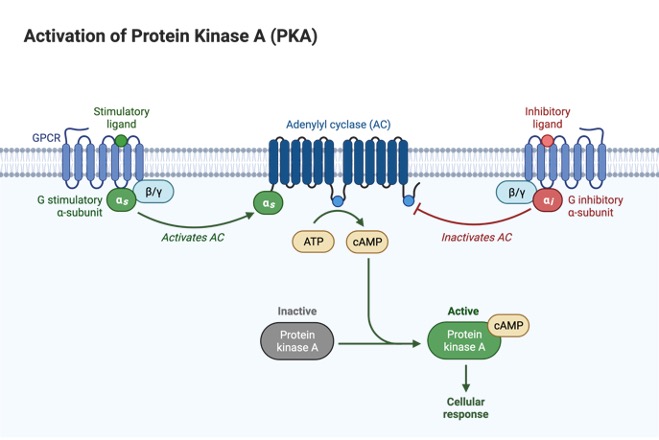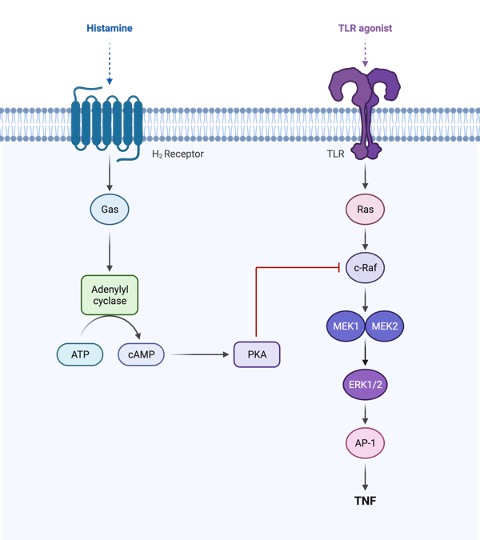Table of Contents
Cyclic AMP Definition
Cyclic adenosine monophosphate (Cyclic AMP) is a type of adenosine monophosphate, which is in a cyclic manner and is a message carrier, which transforms signal at the cell level. Adenosine monophosphate comprises of ribose sugar, adenine base and a phosphate group, thus forming a nucleotide.
AMP gets transformed to ATP, when its phosphorylated, which functions as the nucleic acid component. To the nucleotides, the ATP bounds and can form chains, but cAMP does not result in the formation of a chain, as it’s in a ring forma like the 3’-5’ cyclic AMP with ester.
What is Cyclic AMP?
Adenosine monophosphate when comprises of a phosphate group and ribonucleoside is called as the nucleoside monophosphate, which possess a single phosphate group and a ribose sugar. In adenosine monophosphate, the nucleoside is the purine base adenine which is bound to ribose sugar and to the nucleoside only a single phosphate group is bounded.
Cyclic AMP and Adenylic Acid
Adenylic acid is another name for cAMP, which is obtained when the adenosine and phosphoric acid fuse as a precipitate. When nucleic acids are broken, it results in the formation of this nucleotide. The difference in the 3’ and 5’ adenylic acid is the position of ribose and phosphoric acid. Deoxy adenylic acid has hydrogen substituted rather than hydroxyl group at 2nd carbon of sugar.
Cyclic AMP Metabolism
ATP is generated from cAMP, which takes place in the cell membrane and the reaction is carried out by adenylate cyclase, which gets triggered by the signaling molecules, which gets attached to the receptors. The breakdown of cAMP occurs by the enzyme phosphodiesterase resulting in the formation of AMP.
Cyclic AMP Function
The very first function is acting as the messenger and converts the signal to the cell level. They type of signal it will act depends on organism, like an intracellular signal in the cAMP pathway. The addition of glucagon and adrenaline within the cell, through cAMP as hormones cannot by themselves enter the plasma membrane and requires a messenger.

This process works by triggering the protein kinase A, to which the cAMP will bind at the sub unit, so that the catalytic and regulatory subunit separate out. The catalytic subunit will interact with the protein substrates, where their phosphate group will move to other residues like serine and threonine.

Further the protein will be phosphorylated and either they will prohibit the ion channel or interact with them. The phosphorylated protein will further interact with protein kinase A at the DNA’s promoter region and will escalate transcription. However, not all the protein kinase will interact with cAMP.
The amount of calcium ions which can pass through the channel, is also under the control of cAMP. The activation of lac operon model, which is used to study the growth of bacteria is also regulated by cAMP.
Cyclic AMP Citations
- Cyclic AMP in prokaryotes. Microbiol Rev . 1992 Mar;56(1):100-22.
- Cyclic AMP in prokaryotes. Annu Rev Microbiol . 1974;28(0):353-69.
- Cyclic AMP signalling during mammalian sperm capacitation–still largely terra incognita. Reprod Domest Anim . 2003 Apr;38(2):102-10.
- Figures are created with BioRender.com







